การใช้ Past Tense
ก่อนที่จะไปสู่กระบวนการใช้งานของ Past Tense ในภาษาไทย จำเป็นต้องทราบว่าวัตถุประสงค์หลักของ Past Tense คือเพื่อให้ผู้ฟังหรือผู้อ่านรู้สึกถึงเหตุการณ์หรือสถานการณ์ที่เกิดขึ้นในอดีต โดยทั่วไปแล้ว พื้นฐานที่จะมีการใช้ Past Tense นั้นจำเป็นต้องเรียนรู้ก่อนหน้านี้เพื่อให้สามารถเข้าใจถึงวิธีการใช้งานของมันได้
ผู้ใช้งาน Past Tense คือผู้ที่ต้องการแสดงถึงเหตุการณ์หรือสถานการณ์ที่เกิดขึ้นในอดีตให้ผู้อื่นเข้าใจได้ และใช้ในการรายงานเหตุการณ์ต่างๆ เช่น เหตุการณ์ที่เกิดขึ้นในอดีต ประวัติย้อนหลัง หรือเหตุการณ์ที่ผ่านมาแล้ว
พื้นฐานของ Past Tense จะเป็นเรื่องที่ต้องเรียนรู้ก่อนที่จะเข้าใจถึงการใช้งานของมันได้ บางครั้งอาจใช้รูปคำกริยาเดียวกับกริยาใน Present Tense แต่มีเพียงขั้นตอนเพิ่มเติมในการใช้งาน เช่น การเติม “ได้” หรือ “แล้ว” หลังรูปคำกริยา ซึ่งอาจเป็นส่วนที่ทำให้ผู้เรียนรู้ว่าได้เกิดเหตุการณ์นั้นขึ้นในอดีต
ในกรณีที่เราต้องการใช้ Past Tense ในการเปรียบเทียบระหว่างปัจจุบันและอดีต เราสามารถใช้ “เคย” เพื่อแสดงถึงการเปรียบเทียบเหตุการณ์หรือสถานการณ์ที่เกิดขึ้นในอดีตกับปัจจุบันได้ เช่น “เขาเคยเป็นนักศึกษาที่ดี” หมายถึงเขาเคยเป็นนักศึกษาที่ดีในอดีต แต่ปัจจุบันนั้นไม่ใช่แล้ว
เมื่อพูดถึงรูปแบบการรู้เวลาใน Past Tense สามารถแบ่งได้เป็น 3 รูปแบบ คือ
– การร้อยกรองเวลาที่เกิดขึ้นในอดีต หรือ Past Perfect Tense เช่น “เขาเมื่องานช้า ทำให้เขาไม่ได้ไปงานแต่งงาน”
– การบอกเวลาที่เกิดขึ้นในอดีต หรือ Past Simple Tense เช่น “ฉันทำการบ้านเมื่อวานนี้”
– การบอกเวลาที่เกิดขึ้นในอดีตแต่ยังคงเกิดขึ้นในปัจจุบันอยู่ เรียกว่า Past Continuous Tense เช่น “ฉันกำลังอ่านหนังสือตอนที่ตีสามเมื่อวาน”
เมื่อเปรียบเทียบกับ Present Tense ในภาษาไทย จะพบว่าใน Present Tense เราใช้กริยาในช่องที่หนึ่งของประโยคเพียงแค่รู้เวลาเดียว แต่ใน Past Tense เราต้องรู้เวลาที่เกิดเหตุการณ์ด้วย นอกจากนี้ ยังมีคำช่วยเพิ่มเติมเพื่อให้แสดงถึงการเกิดเหตุการณ์ในอดีตอีกด้วย เช่น “ได้”, “แล้ว” เป็นต้น
ในกรณีของ Future Tense เป็นการใช้ภาษาอีกส่วนหนึ่งที่ผู้เรียนอาจต้องความช่วยเสมอ โดยเราสามารถใช้ Past Tense ในการแสดงความเชื่อมั่นทางความคิดหรือแบบเสน่ห์ที่เกี่ยวกับเหตุการณ์ในอนาคต เช่น “คิดว่า”, “เชื่อว่า” เป็นต้น
การใช้ Past Tense กับกริยาและคำกริยาช่วยเป็นจุดที่ต้องใช้ความระมัดระวังเป็นพิเศษ โดยภาษาไทยมีรูปแบบวากลับของการใช้กริยา เช่น
– กริยาในคำสั่ง เช่น “เปิดหน้าต่าง”
– กริยาในคำเสน่ห์ เช่น “ช่วยด้วย”
– กริยาในคำแสดงความเที่ยงตรง เช่น “ใจเย็นๆ นะ”
– กริยาในคำสั่งเสริม เช่น “อย่าเพิ่งไป”
การใช้ Past Tense ในประโยคของกริยากระทำตนเอง จะแบ่งเป็น 2 กรณี คือ
– เมื่อกริยากระทำตนเองเกิดขึ้นในอดีตและเสร็จสิ้นแล้ว เช่น “เขาทำการบ้านเสร็จแล้ว”
– เมื่อกริยากระทำตนเองเกิดขึ้นในอดีตและยังไม่เสร็จสิ้น เช่น “เขากำลังเรียนภาษาไทยอยู่”
การใช้ Past Tense ในประโยคของกริยากระทำต่อเนื่องนั้นจะใช้เวลาที่เกิดความเชื่อมั่นเสมอ และใช้คำช่วยเติมที่เหมาะสม เช่น “ได้”, “แล้ว” เป็นต้น เพื่อให้เป็นเค้าโครงและการสื่อความหมายให้ถูกต้อง โดยอาจใช้เหตุการณ์ในอดีตเป็นพื้นฐานในการสร้างประโยค
แต่เพียงเพราะความสำคัญของการใช้ Past Tense ในภาษาไทย มีความผิดพลาดที่พบบ่อยเกี่ยวกับการใช้งานนี้ ซึ่งสามารถสรุปได้ดังนี้
1. การผสมกริยา Present Tense และ Past Tense เข้าด้วยกันในประโยคเดียวกัน
2. การใช้กลุ่มกริยาผิด
3. การใช้รูปคำกริยาไม่ถูกต้อง
4. การใช้ Past Tense ในประโยคที่ไม่เกี่ยวข้องกับเหตุการณ์ในอดีต
ท้ายที่สุด เพื่อเข้าใจในแง่ของการใช้ Past Tense ในภาษาไทย จำเป็นต้องมีตัวอย่างประโยคเพื่อสร้างความเข้าใจที่แน่นอน โดยรวบรวมตัวอย่างประโยค Past Tense ดังนี้
1. เมื่อวานนี้ฉันเข้าคลังสินค้า
2. เขาไปเที่ยวทะเลสาบเมื่อเดือนที่แล้ว
3. ครูให้พวกเราบทเรียนวันก่อน
4. เจอเพื่อนเก่าที่ตลาดเมื่อคืน
5. ฉันทำหนังสือร้ายทอดสนั่นเมื่อช่วงปลายปีที่แล้ว
6. พรุ่งนี้เพื่อนจะมาเยี่ยมบ้านเรา
7. เมื่อวานพวกเราเดินทางไปปิกนิกชั่วคราว
8. ฉันได้อ่านหนังสือนิยายที่เขาเพิ่งเลิกเขียน
9. เขากำลังนั่งทำงานภายในออฟฟิศ
10. เมื่อคืนนี้ฟ้าเต็มดาว
ในสรุป การใช้ Past Tense ในภาษาไทยเป็นสิ่งสำคัญที่ผู้เรียนต้องเข้าใจอย่างถูกต้อง เนื่องจากเป็นวิธีการแสดงถึงเหตุการณ์หรือสถานการณ์ที่เกิดขึ้นในอดีต ผู้เรียนควรเรียนรู้พื้นฐานของ Past Tense และรูปแบบการใช้งานใน
Past Simple Vs Past Continuous ใช้กับอดีตทั้งคู่ แต่ใช้ต่างกันยังไง | Eng ลั่น [By We Mahidol]
คำสำคัญที่ผู้ใช้ค้นหา: การใช้ past tense past tense ตัวอย่างประโยค, Past Tense โครงสร้าง, past tense มีอะไรบ้าง, past tense คําศัพท์, Simple past tense, Past Tense คือ, ตัวอย่างประโยค past simple tense 20 ประโยค, past simple tense ตัวอย่างประโยค
รูปภาพที่เกี่ยวข้องกับหัวข้อ การใช้ past tense
![Past simple VS Past continuous ใช้กับอดีตทั้งคู่ แต่ใช้ต่างกันยังไง | Eng ลั่น [by We Mahidol] Past simple VS Past continuous ใช้กับอดีตทั้งคู่ แต่ใช้ต่างกันยังไง | Eng ลั่น [by We Mahidol]](https://lasbeautyvn.com/wp-content/uploads/2023/07/hqdefault-1770.jpg)
หมวดหมู่: Top 26 การใช้ Past Tense
ดูเพิ่มเติมที่นี่: lasbeautyvn.com
Past Tense ตัวอย่างประโยค
แต่ก็ยังมีคะแนนการแสดงการกระทำในขณะนั้นในภาษาไทยที่เรียกว่า “past tense” นี่คือประโยคที่ใช้อธิบายเหตุการณ์ที่เกิดขึ้นในอดีตหรือการกระทำที่เริ่มต้นแต่สิ้นสุดลงในอดีต
การใช้ past tense ในภาษาไทย
เหตุการณ์ในอดีตอาจเกิดขึ้นในช่วงบางช่วงหรือขณะพูดคุย การใช้ past tense ในภาษาไทยจะช่วยให้เราสื่อสารเรื่องราวที่เกิดขึ้นในอดีตได้อย่างชัดเจน
ตัวอย่างประโยคใน past tense
1. เมื่อวานผมไปเที่ยวที่ชายหาด – Yesterday, I went to the beach.
2. เมื่อวานเขาชนรถบุกอย่างรุนแรง – Yesterday, he crashed his car violently.
3. เมื่อปีที่แล้วเธอขาดงาน – Last year, she missed her work.
4. เมื่อเช้าวันนี้ฉันพบเพื่อนเก่า – This morning, I met an old friend.
5. สองชั่วโมงก่อนเขาได้อ่านหนังสือสู่เรื่องราวจบ – Two hours ago, he finished reading the book.
การเปลี่ยนประโยคจาก present tense เป็น past tense
ในภาษาไทยเราสามารถเปลี่ยนประโยคจาก present tense เป็น past tense ได้อย่างง่ายดายโดยเพียงแค่เปลี่ยนคำกริยาให้เป็นรูปของการกระทำในอดีต
ตัวอย่าง:
1. เวลาปกติ: เขาเดินไปที่ร้านอาหาร
ตัวเปลี่ยนเป็น past tense : เขาเดินไปที่ร้านอาหาร
2. เวลาปกติ: เขากินอาหารที่ร้านอาหาร
ตัวเปลี่ยนเป็น past tense : เขากินอาหารที่ร้านอาหาร
คำถามที่พบบ่อย
1. past tense สำคัญอย่างไรในการสื่อสาร?
past tense เป็นหนึ่งในเครื่องมือที่ใช้ในการสื่อสารเรื่องราวที่เกิดขึ้นในอดีต มันช่วยให้ผู้ฟังหรือผู้อ่านเข้าใจว่าเรื่องราวเหล่านั้นเกิดขึ้นในขณะใด
2. การใช้ past tense เหมือนกับการใช้คำกริยาช่อง 2 ในภาษาไทยหรือไม่?
ไม่เหมือน การใช้ past tense เป็นการเปลี่ยนรูปคำกริยาให้เป็นรูปของการกระทำในอดีต ในขณะที่การใช้คำกริยาช่อง 2 เป็นการเปลี่ยนรูปคำกริยาให้เป็นรูปของการกระทำในอนาคต
3. ผมสามารถใช้ past tense สำหรับทุกประโยคในเรื่องราวเดียวกันได้หรือไม่?
ใช่, สำหรับเรื่องราวเดียวกันเราสามารถใช้ past tense สำหรับทุกประโยคในเรื่องนั้นได้ เพื่อให้เรื่องราวเป็นคล้ายกับว่าเกิดขึ้นในเวลาเดียวกัน
4. past tense เป็นยังไงกับเรื่องที่ยังไม่เสร็จสิ้น?
เรายังสามารถใช้ past tense เพื่อกล่าวถึงเรื่องที่ยังไม่เสร็จสิ้นได้ เช่น “ฉันอ่านหนังสือเล่มนี้มานานแล้ว” – “I have been reading this book for a while” ในกรณีนี้ เราใช้ past tense ในประโยคหลักแต่ใช้ present perfect tense ในประโยคย่อย
5. วิธีการรู้จักประโยคที่ใช้ past tense?
การใช้ past tense จะค่อนข้างเป็นแนวทางที่ไม่กว้างขวาง และมักใช้คำกริยาธรรมดาเพื่อหมายถึงเหตุการณ์ที่เกิดขึ้นในอดีต หากเราไม่แน่ใจเราสามารถใช้เวลาฟังหรืออ่านเพื่อสังเกตุตัวอักษรพิเศษที่บ่งชี้ถึงการใช้ past tense เช่น “ed” หรือเป็น “en”+-+- ในบางกรณี
Past Tense โครงสร้าง
The Thai language, with its rich linguistic history and complex grammar, has various methods of expressing the past tense. As an essential aspect of communication, understanding the past tense โครงสร้าง (khrong-sa-rang) is crucial for Thai language learners. In this article, we will explore the structure and usage of past tense in Thai, providing a comprehensive guide for mastering this linguistic concept.
Structure of Past Tense โครงสร้าง in Thai:
1. Regular Verbs:
Regular verbs in Thai follow a simple pattern to express the past tense. The basic structure consists of adding the prefix “เคย” (koey) before the verb root. For example:
Present Tense: ไป (bpai) – to go
Past Tense: เคยไป (koey bpai) – went
This structure is commonly used for regular verbs to indicate actions that occurred in the past.
2. Irregular Verbs:
In Thai, several verbs exhibit irregular conjugations in the past tense. These changes can occur in the vowel sound, tone, or entirely modify the verb root. It is imperative to memorize these irregular forms as they deviate from the regular verb patterns. Some examples include:
Present Tense: กิน (gin) – to eat
Past Tense: กิน (gin) – ate
Present Tense: เป็น (bpen) – to be
Past Tense: เป็น (bpen) – was
These irregularities pose a challenge for learners, but with practice and exposure, the correct usage can be mastered.
3. Auxiliary Verbs:
Past tense can also be expressed through the use of auxiliary verbs combined with the verb root. One commonly used auxiliary verb is “ได้” (dai), which signifies the achievement of an action in the past. For example:
Present Tense: ชอบ (chaawp) – to like
Past Tense: ได้ชอบ (dai chaawp) – liked
This construction is generally employed when emphasizing the result or outcome of an action.
4. Adverbs:
Thai also utilizes adverbs to indicate past tense. Adverbs such as “เมื่อวาน” (meua-waan) or “เมื่อวานนี้” (meua-waan-nee) translate to “yesterday” and are commonly used to express actions that occurred on the previous day. For example:
Present Tense: อ่าน (aan) – to read
Past Tense: อ่านเมื่อวาน (aan meua-waan) – read yesterday
These adverbs provide a specific timeframe and help establish the past tense contextually.
FAQs:
Q1. Are there any exceptions to the regular verb pattern?
Yes, there are exceptions to the regular verb pattern. Certain verbs undergo sound changes, tone shifts, or require additional modifications in the past tense. It is important to familiarize oneself with these exceptions to ensure accurate usage.
Q2. Can the past tense be combined with other tenses?
Yes, the past tense in Thai can be combined with other tenses to express various temporal contexts. For instance:
Present Perfect: ได้พบ (dai phop) – have met
Past Perfect: เคยพบ (koey phop) – had met
By combining past tense with other tenses, a more nuanced temporal framework can be achieved.
Q3. How can I improve my understanding and usage of past tense โครงสร้าง in Thai?
Improving your understanding and usage of past tense in Thai requires consistent practice and exposure to the language. Engaging in conversations with native Thai speakers, reading Thai literature, and listening to Thai music or podcasts are excellent methods to refine your skills.
Q4. Are there any additional resources available for learning past tense โครงสร้าง in Thai?
Yes, various online resources provide in-depth explanations, exercises, and examples to help learners grasp the concept of past tense in Thai. Websites, language learning apps, and textbooks dedicated to learning Thai grammar can serve as valuable companions in your language journey.
In conclusion, mastering past tense โครงสร้าง in Thai is essential for proper communication in this beautiful language. By understanding the different structures and usages, learners can confidently express actions that occurred in the past. Maintain consistency in your practice, and explore various resources to enhance your command of past tense in Thai. Happy learning!
Past Tense มีอะไรบ้าง
The most common way to express past tense in Thai is by adding the word “แล้ว” (láew) after the verb. This marker indicates that the action has already taken place. For example, the sentence “I ate” would be translated as “ผมกินแล้ว” (pǒm gin láew). Similarly, “She studied” would be “เธอเรียนแล้ว” (thoo rian láew). This simple form of past tense is often used in everyday conversation and is easily understood by native Thai speakers.
However, it is important to note that not all verbs can be directly followed by “แล้ว” (láew) to indicate past tense. Some verbs require specific grammatical markers or word formations. For instance, the verb “to go” is translated as “ไป” (bpai) in Thai. To express past tense, the word “ไปแล้ว” (bpai láew) is used. Therefore, the sentence “I went” would be “ผมไปแล้ว” (pǒm bpai láew).
Another common way to express past tense is through the use of the verb “เคย” (koey). This word indicates that an action was done in the past, but may not necessarily be ongoing. For example, the sentence “I used to play football” would be translated as “ผมเคยเล่นฟุตบอล” (pǒm koey len footbon). The verb “เคย” (koey) implies that the person played football in the past, but does not necessarily continue to do so.
In addition to these basic past tense forms, Thai also has other verb forms to express specific past actions. For instance, the verb “to see” is translated as “เจอ” (jer) in Thai. To express past tense in this context, the verb form “เจอกับ” (jer gap) is used. Therefore, the sentence “I saw him” would be “ผมเจอเขา” (pǒm jer kao).
Frequently Asked Questions (FAQs):
Q: Are there any irregular verbs in Thai past tense?
A: Yes, there are some irregular verbs in Thai past tense. For example, the verb “to be” is translated as “เป็น” (bpen) in present tense but becomes “เป็นแล้ว” (bpen láew) in past tense. Similarly, the verb “to have” is translated as “มี” (mee) in present tense but becomes “มีอะไรบ้าง” (mee a-rai baang) in past tense.
Q: Can I use past tense markers with any verb in Thai?
A: In most cases, yes. However, some verbs require specific word formations or grammatical markers to indicate past tense accurately. It is always advisable to consult a reliable Thai language resource or native speaker to ensure proper usage.
Q: How do I know when to use “แล้ว” (láew) or “เคย” (koey) to express past actions?
A: The choice between “แล้ว” (láew) and “เคย” (koey) depends on the context and whether the action is ongoing or not. “แล้ว” (láew) is used to indicate completed actions, while “เคย” (koey) emphasizes past actions that may not continue in the present.
Q: Are there any other forms of past tense in Thai?
A: Yes, Thai has several other verb forms and grammatical markers to express past tense effectively. Some examples include using word formations like “อยากจะ” (yàak ja) or “อยากไป” (yàak bpai) to indicate past desires or intentions.
In conclusion, past tense is an essential aspect of Thai language and allows us to express actions, events, or states that have already occurred. By understanding the various grammatical markers and verb forms used in Thai past tense, learners can effectively communicate in a more nuanced and accurate manner. While the basic form of past tense relies on adding “แล้ว” (láew) after the verb, it is important to note that not all verbs follow this rule. Additionally, verb forms such as “เคย” (koey) and “เจอกับ” (jer gap) provide further options for expressing past actions in Thai. By familiarizing yourself with these various forms and practicing their usage, you can enhance your Thai language skills and communicate with native speakers more effectively.
พบ 39 ภาพที่เกี่ยวข้องกับหัวข้อ การใช้ past tense.




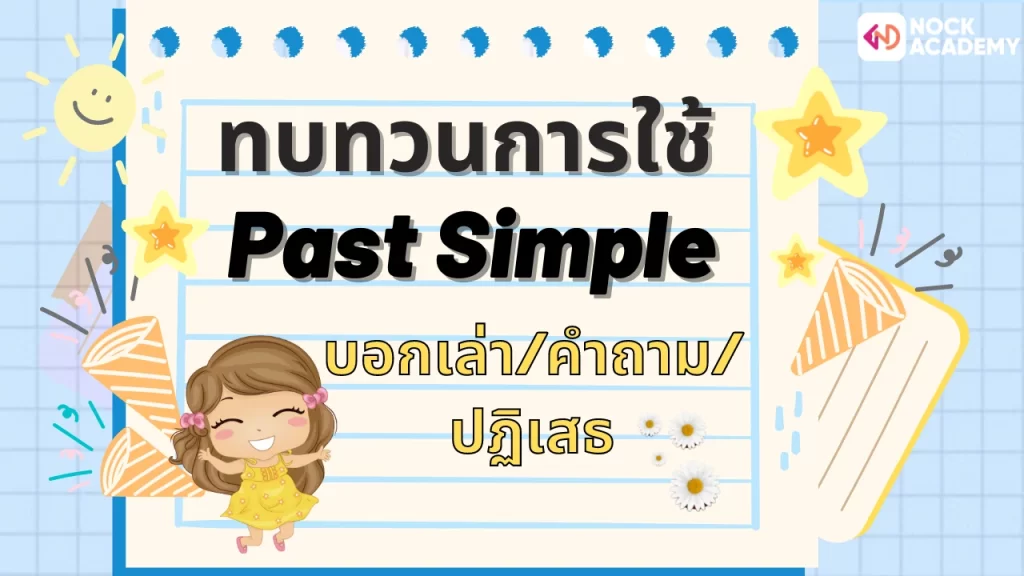

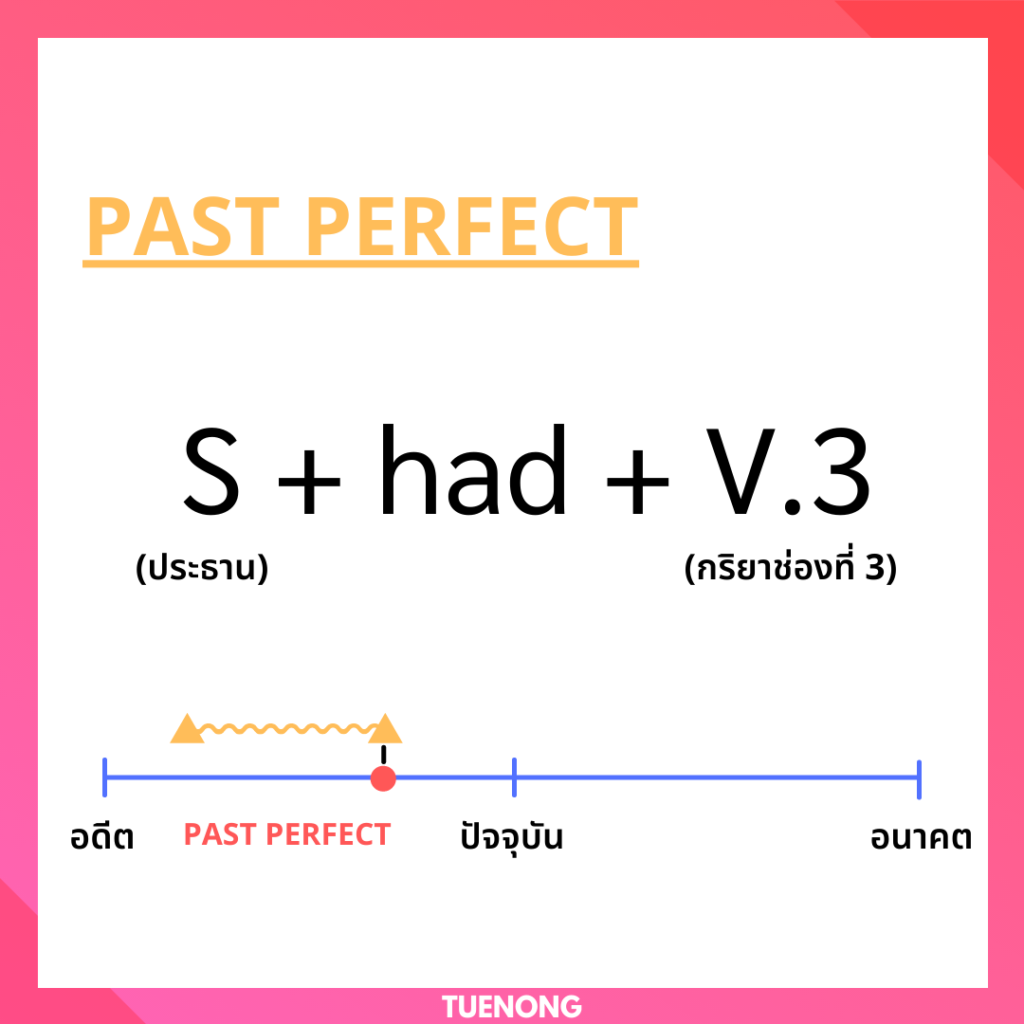



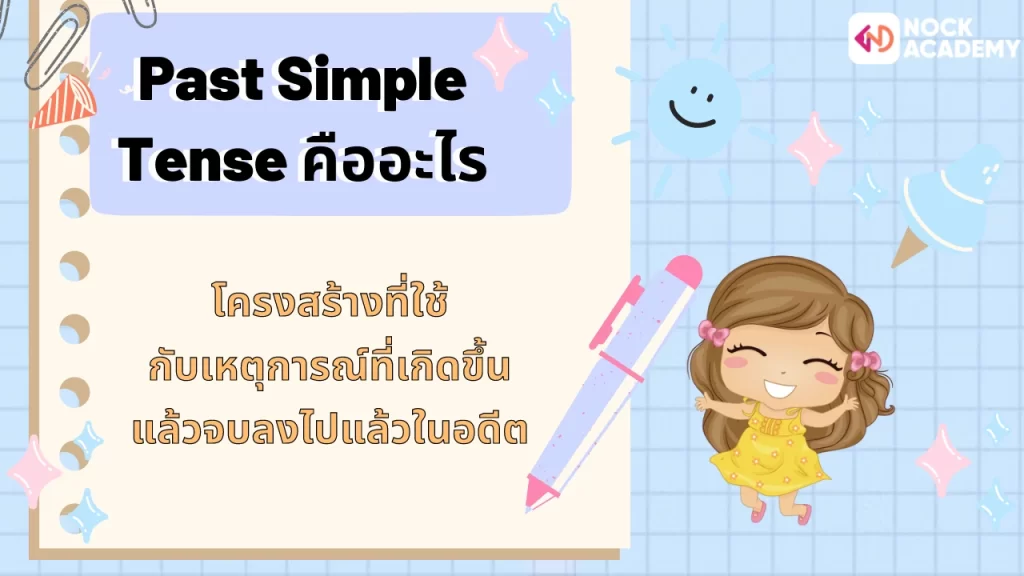

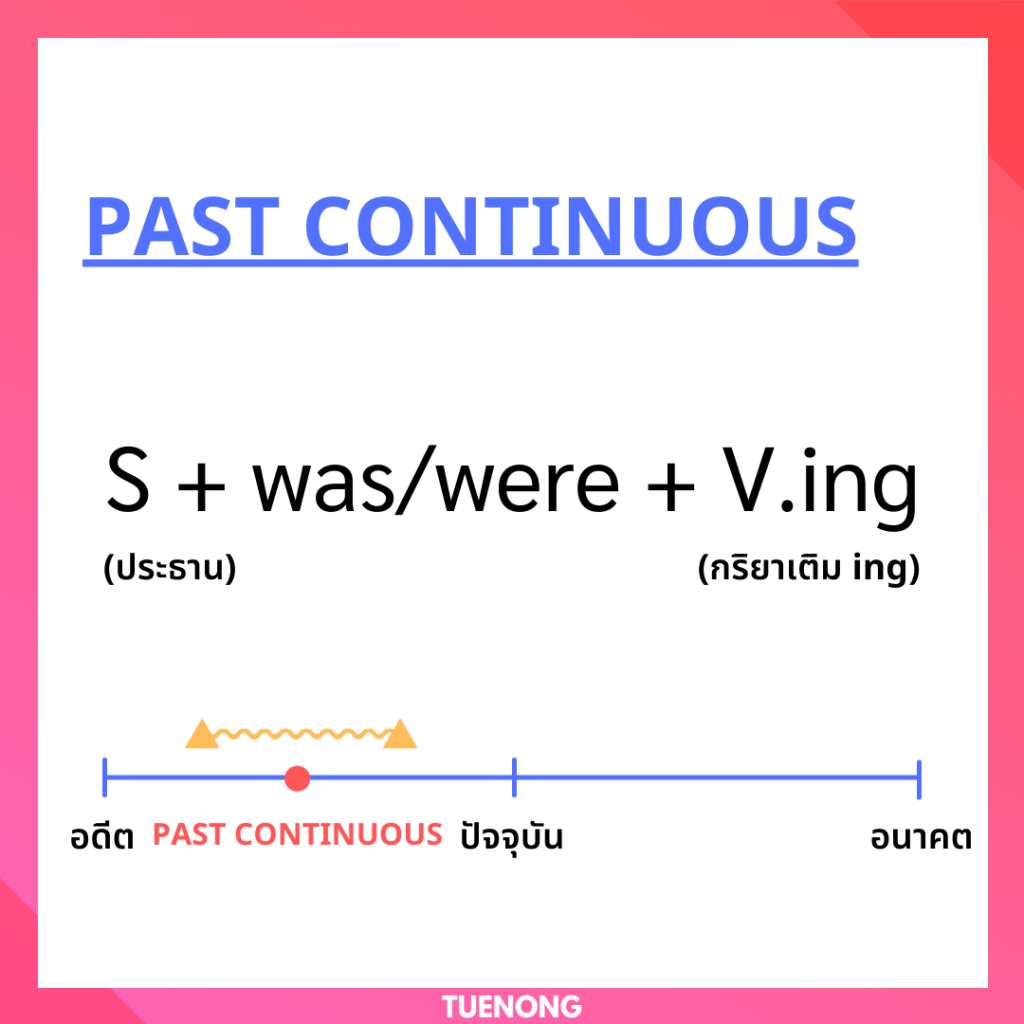
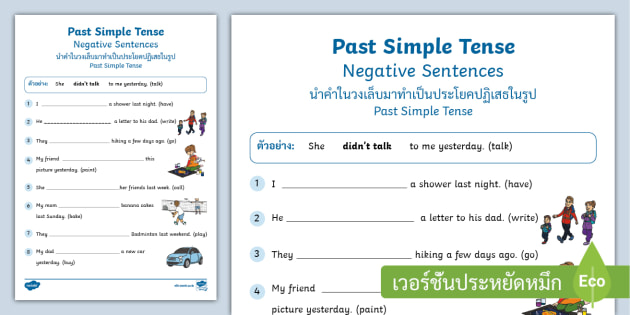
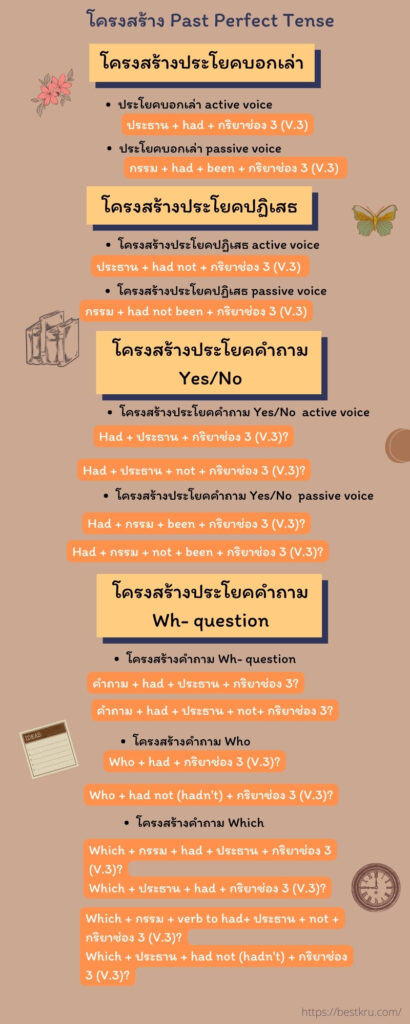



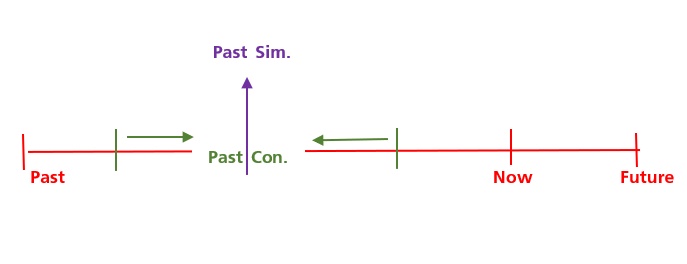

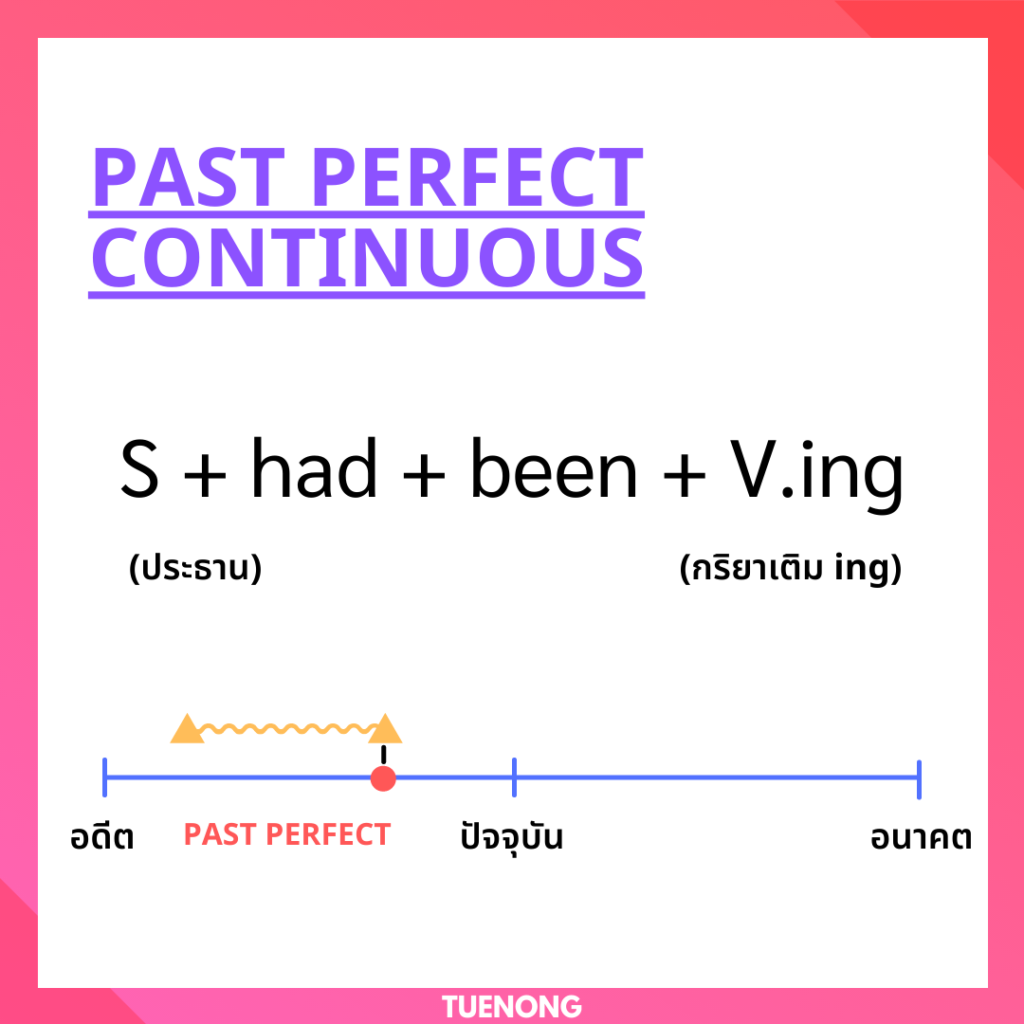
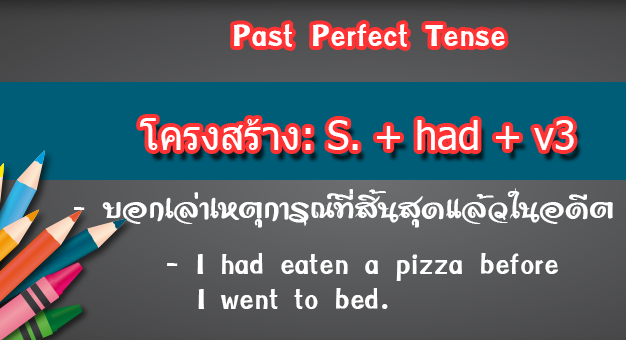
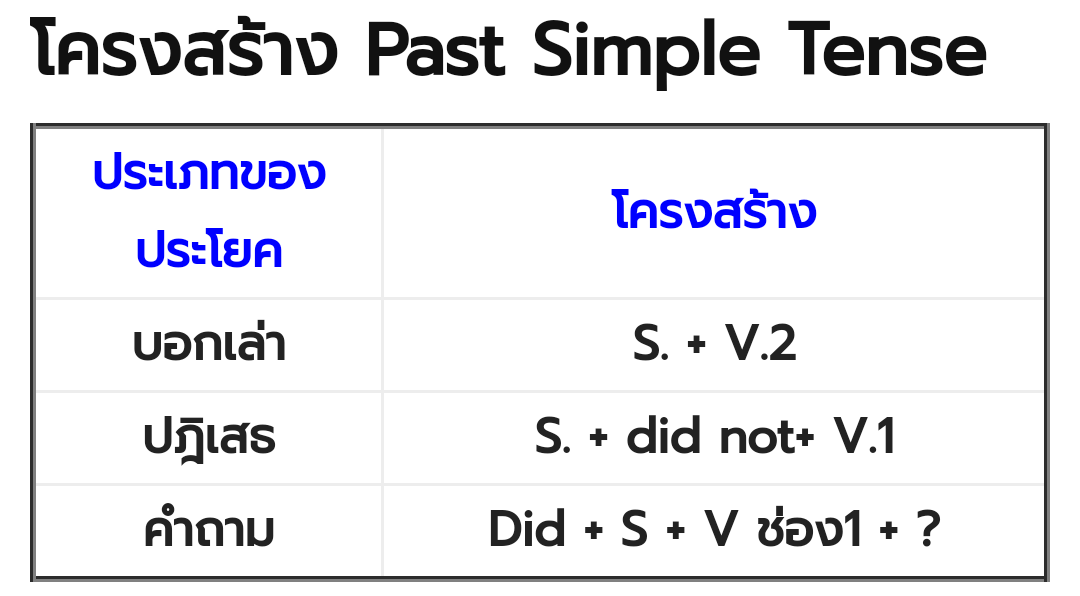
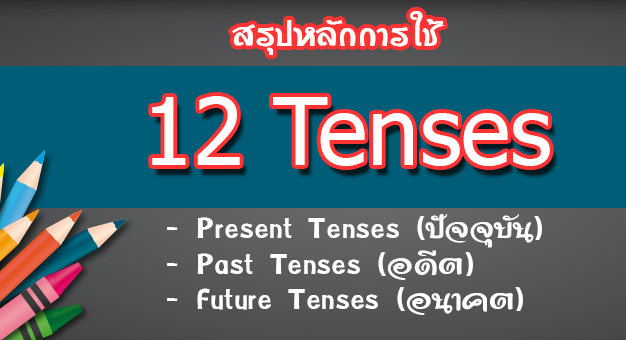



ลิงค์บทความ: การใช้ past tense.
ดูข้อมูลเพิ่มเติมเกี่ยวกับโพสต์หัวข้อนี้ การใช้ past tense.
- Grammar: หลักการใช้ Past Tense : เล่าอดีตได้อย่างมือโปรเหมือน …
- เทคนิคการใช้ Past Tense ในการเล่าเรื่อง ลำดับเหตุการณ์ แบบฉบับ …
- วิธีใช้ Past Tense ในการเล่าเรื่อง ฉบับเข้าใจง่ายที่สุดในโลก
- Past Tense เทคนิคการเล่าเรื่องในอดีต มีอะไรบ้าง ตัวอย่างประโยค
- สรุปวิธีการใช้ Past Simple ฉบับรวบรัด – Globish
- Simple past tense | EF | ประเทศไทย – EF Education First
- หลักการใช้ Past Tense แต่ละแบบ – tonamorn.com
- หลักการใช้ Past Simple Tense (Part1) – English Gang
- มารู้จักกับ Past Tenses กันเถอะ – NockAcademy
- Past Tenses
ดูเพิ่มเติม: blog https://lasbeautyvn.com/category/digital-studios